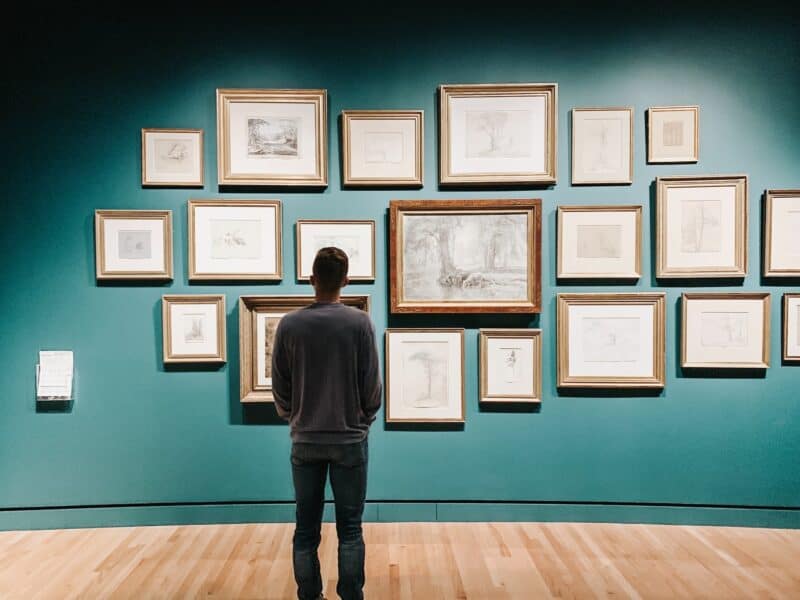
Collecting fine art can be both an exciting and rewarding hobby as well as adding beauty and value to your home.
There are some important things you need to know before you begin collecting, that will help you as you go along. Here are some of them.
Detecting Forgeries
Avoid buying a painting (or any art) on impulse. There are some things you should consider:
Check out the artist. Find his/her gallery listings, exhibit catalogues, and any reviews on the artist.
Suppose you find a name that you recognise. Is it real? A forgery? A copy? Stolen? The first step is to verify the signature. Compare it to other signatures by the same artist. Just because it says Monet, don’t take it for granted that it’s real. The signature can vary slightly from other signatures. But remember, part of a forger’s job is copying signatures, so matching signatures isn’t an all inclusive investigation.
Also make sure that the work in the same medium as the artist typically used and that it is the same genre. Is the size the same as others by the artist? Is the material the same: paper, canvas?
What if you think it might be stolen? The FBI has a stolen art file. After all, art theft is very common. You can always have it appraised before you buy it.
Just because it’s old, doesn’t mean it is worth anything. Some artists just never became popular. Also, forgers use some very sophisticated techniques to add “age” to a painting. The reason they do is to fool the buyer into thinking it’s old, therefore worth money.
It could be a copy, not a forgery. In which case it may have some value. Throughout history painters have copied other painters to practise their style. Students have imitated the works of their masters. The caricature of da Vinci was copied by such masters as Caracci, Durer, and Rota, for example.
Preservation of Your Art
- Consider carefully where you are going to hang your art. Hang it on an interior wall away from the sun. Make sure it’s away from heat, humidifiers, and dehumidifiers.
- Light the art with fibre-optic picture lights. Stay away from track lighting and incandescent lights. These are heat sources and can damage your investment.
- Attach cardboard to the back. This will keep moisture from attacking the back of the painting. Hang it by the solid construction of the frame. Avoid eye hooks, use mirror hangers or d-rings.
- If you are moving, or you want to replace it with another piece of art cut two pieces of cardboard the same size as the frame, one for the front, another for the back. Wrap it in acid-free paper and store it vertically.
Cleaning and Repairing
- To dust your painting (or any other kind of art), very gently clean with a soft brush available from an art supply store. Keep the brush for this purpose only. Store it in a bag. Never use polishes, waxes, oils, or sprays as these will destroy your valuable art.
- If it becomes damaged, don’t try to fix it yourself. Leave that to a professional.
- Not all paintings are on canvas. Some art; posters, sketches, watercolours, and drawings for example, are on paper. Most of the caring techniques are the same. Avoid sunlight, use acid-free paper for storage, and ensure close control of heat and humidity.
- Some art, like charcoal drawings, are powdery. Be especially careful not to touch the work, as it might smudge.
Finally, enjoy your collection. And if your collection is getting large, or if it is particularly valuable, remember to protect it. You should consider an alarm system and you should also consider insurance.


